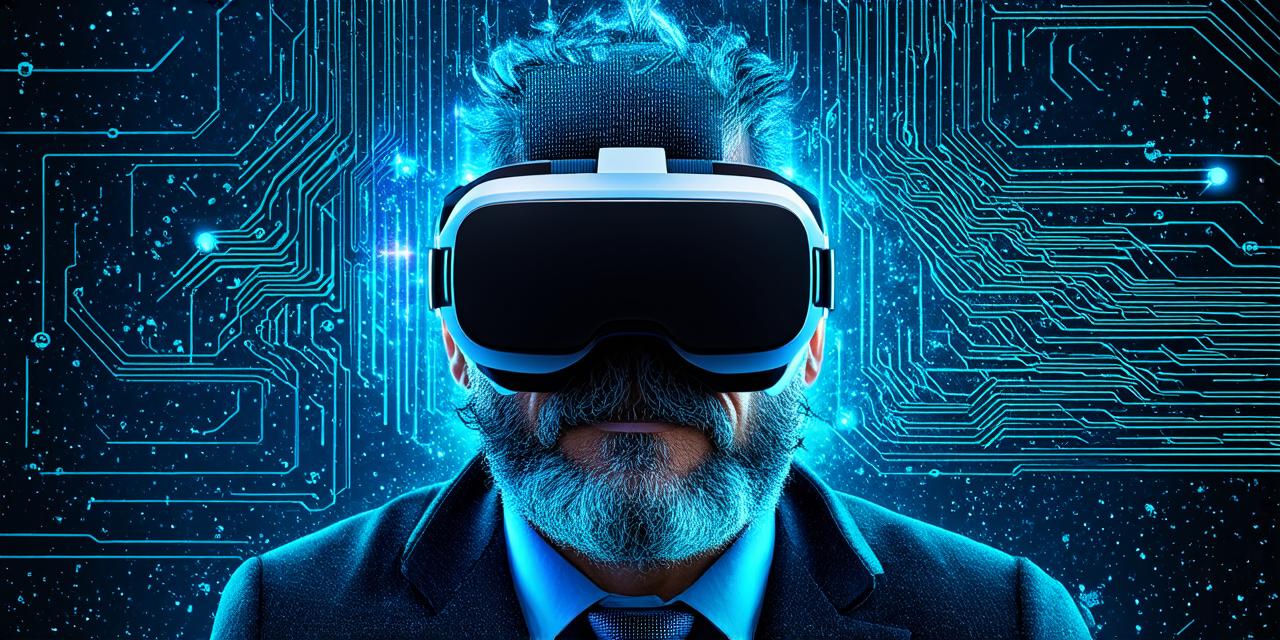Virtual reality (VR) is a rapidly advancing field that has shown great promise in the treatment of various mental health conditions. VR provides individuals with an immersive and engaging environment for therapy, allowing them to interact with others and simulate real-life situations in a controlled and safe setting.
1. Treating Autism Spectrum Disorder (ASD)
Virtual reality can be used to treat autism spectrum disorder (ASD) by providing individuals with the opportunity to interact with others in a controlled and safe environment. In one study, individuals with ASD who underwent virtual reality training showed significant improvements in their social skills compared to those who received traditional therapy or no treatment.

VR can also be used to simulate real-life situations that individuals with ASD may struggle with, such as ordering food in a restaurant or making small talk with strangers. By providing individuals with these experiences in a controlled environment, VR can help them develop social skills and improve their overall functioning in daily life.
2. Addressing Trauma and PTSD
Virtual reality can also be used to treat trauma and post-traumatic stress disorder (PTSD) by providing individuals with a safe and controlled environment for exposure therapy. By exposing individuals to virtual environments that simulate traumatic events, VR can help reduce symptoms of PTSD and improve overall mental health outcomes.
For example, virtual reality has been shown to be effective in treating PTSD symptoms related to combat and natural disasters. In one study, participants who underwent virtual reality exposure therapy for PTSD reported significant reductions in symptoms compared to those who received traditional talk therapy or no treatment.
3. Enhancing Emotional Regulation
Virtual reality can also be used to enhance emotional regulation by providing individuals with the opportunity to practice emotional regulation skills in a controlled and safe environment.
By exposing individuals to virtual environments that simulate emotionally challenging situations, VR can help individuals develop coping strategies and improve overall emotional well-being. For example, virtual reality has been shown to be effective in treating conditions such as borderline personality disorder (BPD) by providing individuals with the opportunity to practice emotional regulation skills in a controlled and safe environment.
In one study, participants who underwent virtual reality training for BPD reported significant improvements in their emotional regulation skills compared to those who received traditional talk therapy or no treatment.
4. Improving Accessibility and Affordability
Virtual reality technology is becoming more accessible and affordable, making it a valuable tool for improving mental health outcomes. By providing an immersive and engaging environment that can be accessed from anywhere in the world, VR can help individuals overcome geographic barriers and improve access to mental health treatment.
Additionally, virtual reality experiences can be designed to be highly customizable, allowing individuals to tailor their experiences to their specific needs and preferences. This makes VR a valuable tool for treating a wide range of mental health conditions, regardless of the individual’s unique circumstances.
5. Addressing Stigma and Barriers to Treatment
Virtual reality can also be used to address stigma and barriers to treatment by providing individuals with a safe and anonymous environment for seeking help.
By providing an immersive and engaging environment that is not linked to any particular individual or location, VR can help reduce the stigma associated with mental health treatment and encourage individuals to seek help when they need it. Additionally, virtual reality can be used to address barriers to treatment such as cost, availability, and distance.
By providing a highly accessible and affordable tool for improving mental health outcomes, VR can help individuals overcome these barriers and improve their overall well-being.
6. Future Directions and Limitations
While virtual reality technology is rapidly advancing, there are still limitations to its use in mental health treatment. For example, virtual reality experiences may not be able to replicate the full complexity of real-life situations, which could limit their effectiveness for certain conditions.
Additionally, virtual reality can be expensive and may not be accessible to everyone, which could limit its availability as a treatment tool. However, as technology continues to advance and become more affordable, virtual reality has the potential to revolutionize the way we approach mental health treatment.
By providing an immersive and engaging environment that is highly customizable, VR can help individuals overcome a wide range of mental health conditions and improve their overall well-being.
In conclusion, virtual reality technology has the potential to be a valuable tool for improving mental health outcomes.
